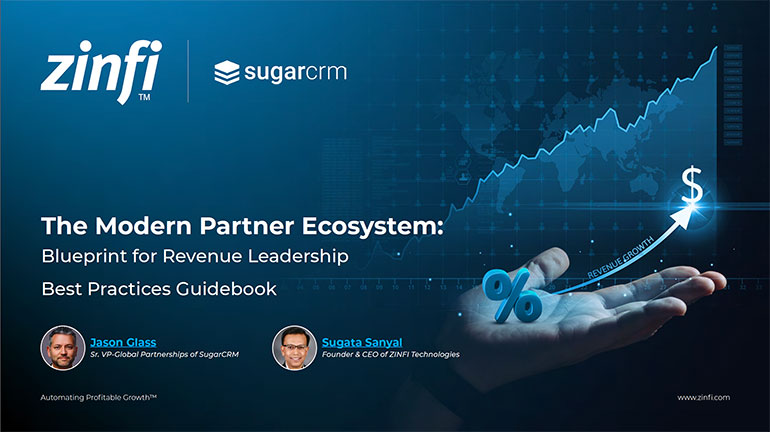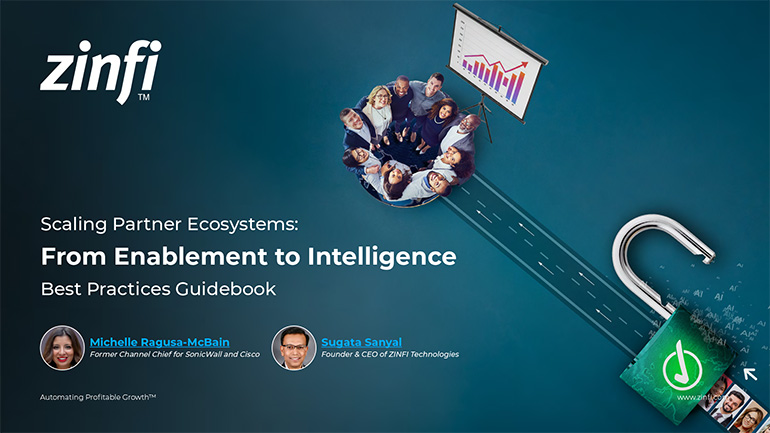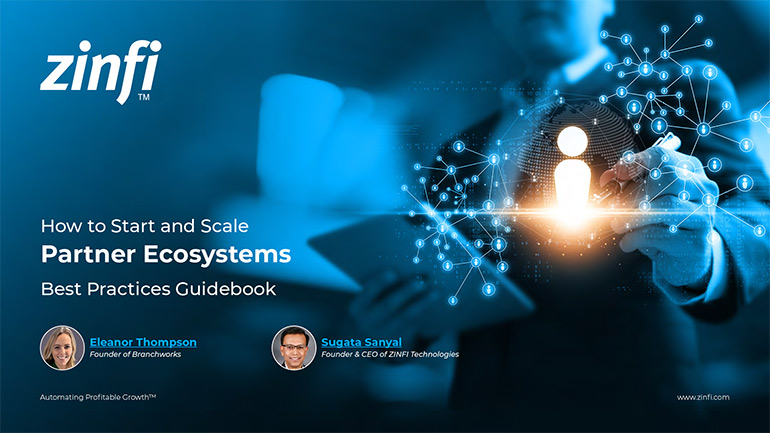Best Practices Articles

Using Integrated Marketing Tools Effectively for Channel Marketing Automation
Many Channel Marketing Automation vendors today provide tools such as email marketing, event marketing, and web and social content syndication. However, it’s questionable whether these tools are enough in themselves to stimulate demand and channel engagement. So what else is needed to complete the demand generation tool set, and how can a technology vendor make sure they buy the right system, and pay the right amount to achieve the desired ROI? These are important questions; moreover, for larger vendors they need to be considered in a global context.
First-generation Channel Marketing Automation tools typically offered web syndication, event marketing and email marketing. In the ensuing phase, most Channel Marketing Automation vendors – like ZINFI – introduced tools like social syndication and on-demand webinars. While these tools were somewhat effective in building sales pipeline, their impact was only moderate. In an effort to understand more, ZINFI last year undertook an extensive, in-depth channel partner survey, which has provided useful insights on the elements needed and changes necessary to drive higher utilization and better return from channel marketing automation platforms.
Time is a prime concern. Channel partners are tightly focused on sales and technical support and only in comparatively rare instances have dedicated marketing staff. So while vendors offer easy mechanisms to issue simple email blasts or implement pre-prepared web content syndication, they can’t overcome the fact that the partners are busy – VERY busy – elsewhere. Most vendor tools are potentially useful, but not sufficiently so – they don’t go far enough. Technology vendors therefore need to look at other ways to energize their partners to undertake marketing. One effective way is to provide a set of integrated tools that is not only easy to use but also preconfigured for various types of campaign.
Any effective demand generation platform must incorporate the following tools and functionality:
- Lead Management– While most Channel Marketing Automation platforms offer basic capabilities to upload leads (or records of potential prospects or existing customers) a true lead management platform needs to include a traditional customer relationship management (CRM)-like interface, for two main reasons:
- For ease of use, the lead management system needs to connect both to the technology vendor’s and the partners’ own CRM system in order to enable data to flow seamlessly back and forth
- Most partners today use a CRM system such as Salesforce.com, so providing them with a CRM-like interface for lead management will drive adoption faster.
- Lead distribution– Most vendors provide leads to their top tier partners, but to build pipeline and promote best practices beyond this rarified level, it’s critical to create a competitive environment for lead distribution. The Channel Marketing Automation tool must be able to distribute leads to pre-defined partner sets, whether to a small segment or to all partners, e.g. in a shark tank mode.
- Campaign-specific tools– Not all tools are relevant for everything, so it’s important to determine the purpose of each campaign. Social and search marketing are effective for awareness generation. Email, Events and Content Syndication showcases are primarily used to generate engagement with prospects. Deep dive training or product usage videos work well for gauging trial interest and qualifying leads. Also, depending on the target segments – SMB, Mid-Market or Enterprise – one or more tools may be needed to make a campaign productive.
- Multi-touch campaigns– Most mid-market and enterprise buying has a long evaluation cycle. In order to stay in the game – not just be included at the last stage for price comparison purposes – a Channel Marketing Automation platform should have multi-touch capabilities. This is essential to automate DRIP campaigns and provide successive content-driven engagement stages to move the buyer along their evaluation process.
- Dynamic reporting– You need to be able to measure what you get, so if you cannot slice or dice the data from your campaigns in multiple ways you will not know – and your partners will not appreciate – what is really working in each campaign, and why some partners are more successful than others. So, comprehensive, end-to-end, dynamic reporting functionality is critical to enabling continuous improvement and remedial action.
- End user-facing sales tools– Generating leads is the first hurdle, but the next is lies in closing the sale. Most vendors carry multiple products, and many of the end user facing marketing and sales tools, e.g., battle cards, case studies or pitch sheets, are scattered around in multiple places in the partner portal. Your Channel Marketing Automation platform should be able to consolidate all relevant information in one place within the campaign, allowing your channel partner to easily locate what they need to take a lead through its cycle as quickly and efficiently as possible.
- Making results count– The platform you choose must be able to provide channel partner stack ranking – just as you do for your own direct sales force – to identify who is building the biggest pipeline and who is falling behind. Sales is a competitive sport, and a ranking system will stimulate efforts while promoting the capabilities of your lead management systems.
ZINFI’s Partner Relationship Management (PRM) platform can provide you with an integrated Channel Marketing Automation tool that not only allows partners to reap the benefits of the relevant digital marketing tools, but also manages the demand generation process end to end, with minimal effort and maximum impact.
Best Practices Guidebook
 The Channel Sales Playbook: Skills, Strategy, and Growth
The Channel Sales Playbook: Skills, Strategy, and GrowthDownload for FREE
 Blueprints for Vertical Success Best Practices
Blueprints for Vertical Success Best PracticesDownload for FREE
 The Future of Partner Enablement: From Enablement Gaps to Global Advantage
The Future of Partner Enablement: From Enablement Gaps to Global AdvantageDownload for FREE
 Reimagine Sales Development. Build a Smarter Prospecting Engine
Reimagine Sales Development. Build a Smarter Prospecting EngineDownload for FREE
 The Zero Trust Imperative: Fortifying Enterprise Security Against AI-Driven Threats
The Zero Trust Imperative: Fortifying Enterprise Security Against AI-Driven ThreatsDownload for FREE
 PartnerOps Excellence: The Definitive Guide to Scalable SaaS Ecosystems
PartnerOps Excellence: The Definitive Guide to Scalable SaaS EcosystemsDownload for FREE
 The Modern Partner Ecosystem Best Practices
The Modern Partner Ecosystem Best PracticesDownload for FREE
 Partner Marketing Reimagined: Strategies for Agile, Insight-Led Growth
Partner Marketing Reimagined: Strategies for Agile, Insight-Led GrowthDownload for FREE
 Scaling with PartnerOps Best Pratices
Scaling with PartnerOps Best PraticesDownload for FREE
 Leading with Partner Programs Best Pratices
Leading with Partner Programs Best PraticesDownload for FREE
 The Partner-First Blueprint: Scaling Trust, Intelligence, and Ecosystem Growth
The Partner-First Blueprint: Scaling Trust, Intelligence, and Ecosystem GrowthDownload for FREE
 Unlock Scalable Growth with The Partner Marketing Growth Blueprint
Unlock Scalable Growth with The Partner Marketing Growth BlueprintDownload for FREE
 From TikTok to LinkedIn: Social Selling Across the Generational Divide
From TikTok to LinkedIn: Social Selling Across the Generational DivideDownload for FREE
 Scaling Partner Ecosystems: From Enablement to Intelligence
Scaling Partner Ecosystems: From Enablement to IntelligenceDownload for FREE
 The Ultimate Guide to Partner Marketing Success Best Practices
The Ultimate Guide to Partner Marketing Success Best PracticesDownload for FREE
 How to Start and Scale Partner Ecosystems Best Practices
How to Start and Scale Partner Ecosystems Best PracticesDownload for FREE
 The Evolution of PartnerOps: Past, Present & Future Best Practices
The Evolution of PartnerOps: Past, Present & Future Best PracticesDownload for FREE







